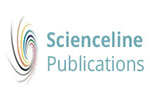(2024) The Alternatives of Antibiotics in Poultry Production for Reducing Antimicrobial Resistance. World's Veterinary Journal. pp. 270-283. ISSN 2322-4568
|
Text
WVJ14(2) 270-283, 2024.pdf - Published Version Download (576kB) |
Abstract
Antibiotics are natural, semi-synthetic, or chemical compounds that have anti-microbial activity and are used in livestock and poultry production for a variety of reasons, including therapeutic and growth promotion. The use of antibiotics in poultry production has been associated with the development of resistant bacteria. The present study attempted to explain the role of antibiotics as poultry growth promoters, bacterial resistance, and risks for human health, with a special focus on some selected bacterial species isolated from poultry farms and products. Furthermore, the manuscript reviewed the literature on alternative feed additives to reduce the reliance on antibiotics. Microbial resistance is a significant global health concern that has been a top global threat in the 21st century. The use of antibiotics in poultry production as non-therapeutic or growth promoters is at low doses and continuously, associated with developing resistant bacteria. Meanwhile, antibiotic-resistant genes in humans may have their roots in the diets of animals treated with antibiotics. Developing bacterial resistance has encouraged researchers to reduce the reliance on antibiotics by identifying potential feed additives, such as essential oils, bacteriophages, antimicrobial peptides, probiotics, prebiotics, organic acid, and enzymes that improve the immune system functions, reduce morbidity and mortality, improve the growth performances of poultry, and preserve consumer health. Open Access: This article is licensed under a Creative Commons Attribution 4.0 International License, which permits use, sharing, adaptation, distribution and reproduction in any medium or format, as long as you give appropriate credit to the original author(s) and the source, provide a link to the Creative Commons licence, and indicate if changes were made. The images or other third party material in this article are included in the article’s Creative Commons licence, unless indicated otherwise in a credit line to the material. If material is not included in the article’s Creative Commons licence and your intended use is not permitted by statutory regulation or exceeds the permitted use, you will need to obtain permission directly from the copyright holder. To view a copy of this licence, visit https://creativecommons.org/licenses/by/4.0/. © The Author(s) 2024
| Item Type: | Article |
|---|---|
| Keywords: | aminoglycoside antibiotic agent; antibiotic agent; carboxylic acid; cephalosporin derivative; essential oil; macrolide; monobactam derivative; phytochemical; polypeptide antibiotic agent; prebiotic agent; probiotic agent; quinolone derivative; sulfonamide; tetracycline derivative, antibiotic resistance; Article; bacterial growth; bacteriophage; bacterium isolation; Campylobacter; Escherichia coli; nonhuman; poultry; Salmonella; Staphylococcus |
| Subjects: | S Agriculture > SF Animal culture |
| Divisions: | World's Veterinary Journal (WVJ) |
| Page Range: | pp. 270-283 |
| Journal or Publication Title: | World's Veterinary Journal |
| Journal Index: | Scopus |
| Volume: | 14 |
| Number: | 2 |
| Publisher: | Scienceline Publication, Ltd |
| Identification Number: | https://doi.org/10.54203/scil.2024.wvj34 |
| ISSN: | 2322-4568 |
| Depositing User: | Dr. Alireza Sadeghi |
| URI: | http://eprints.science-line.com/id/eprint/1195 |
Actions (login required)
 |
View Item |


 Dimensions
Dimensions Dimensions
Dimensions